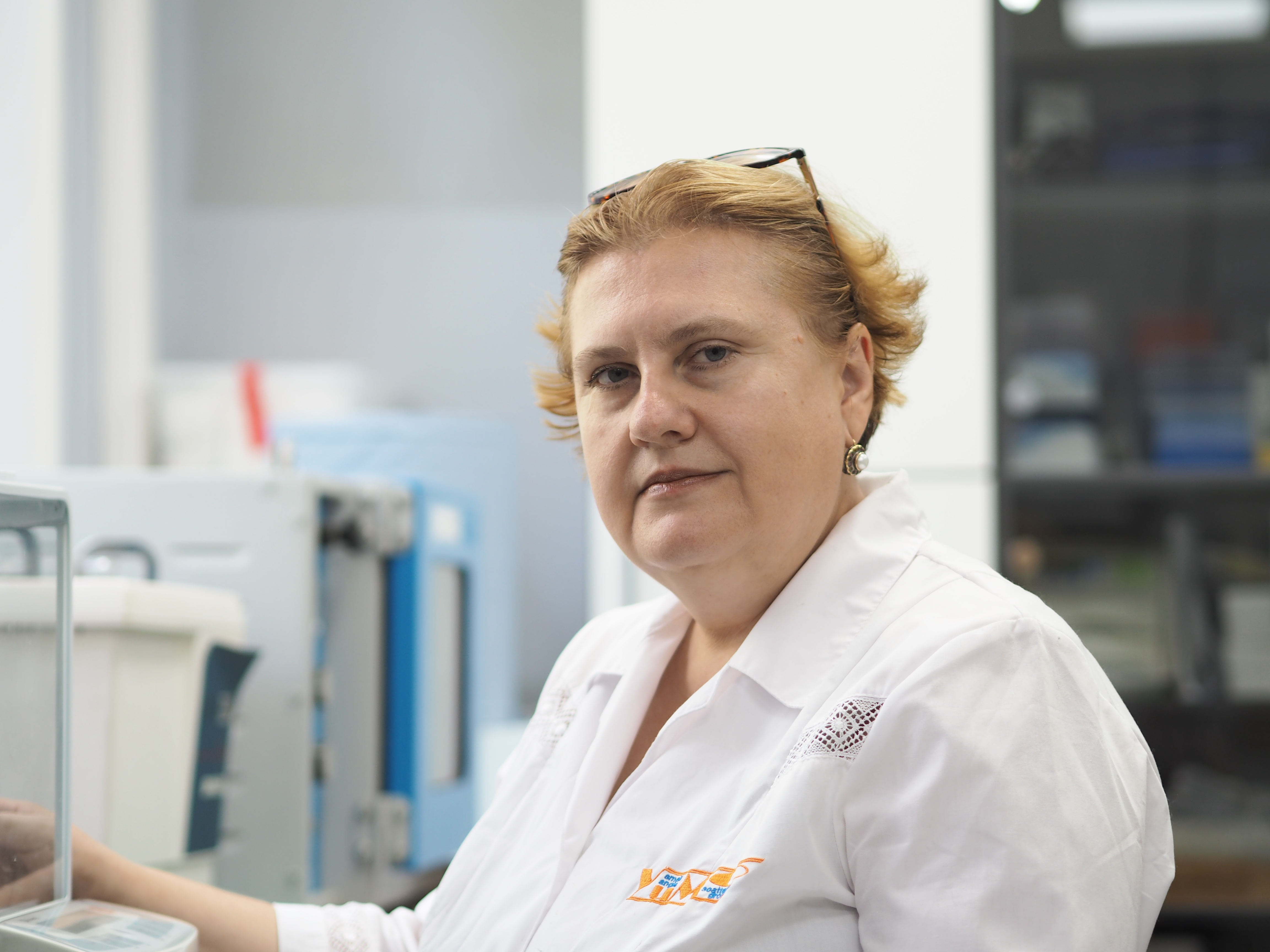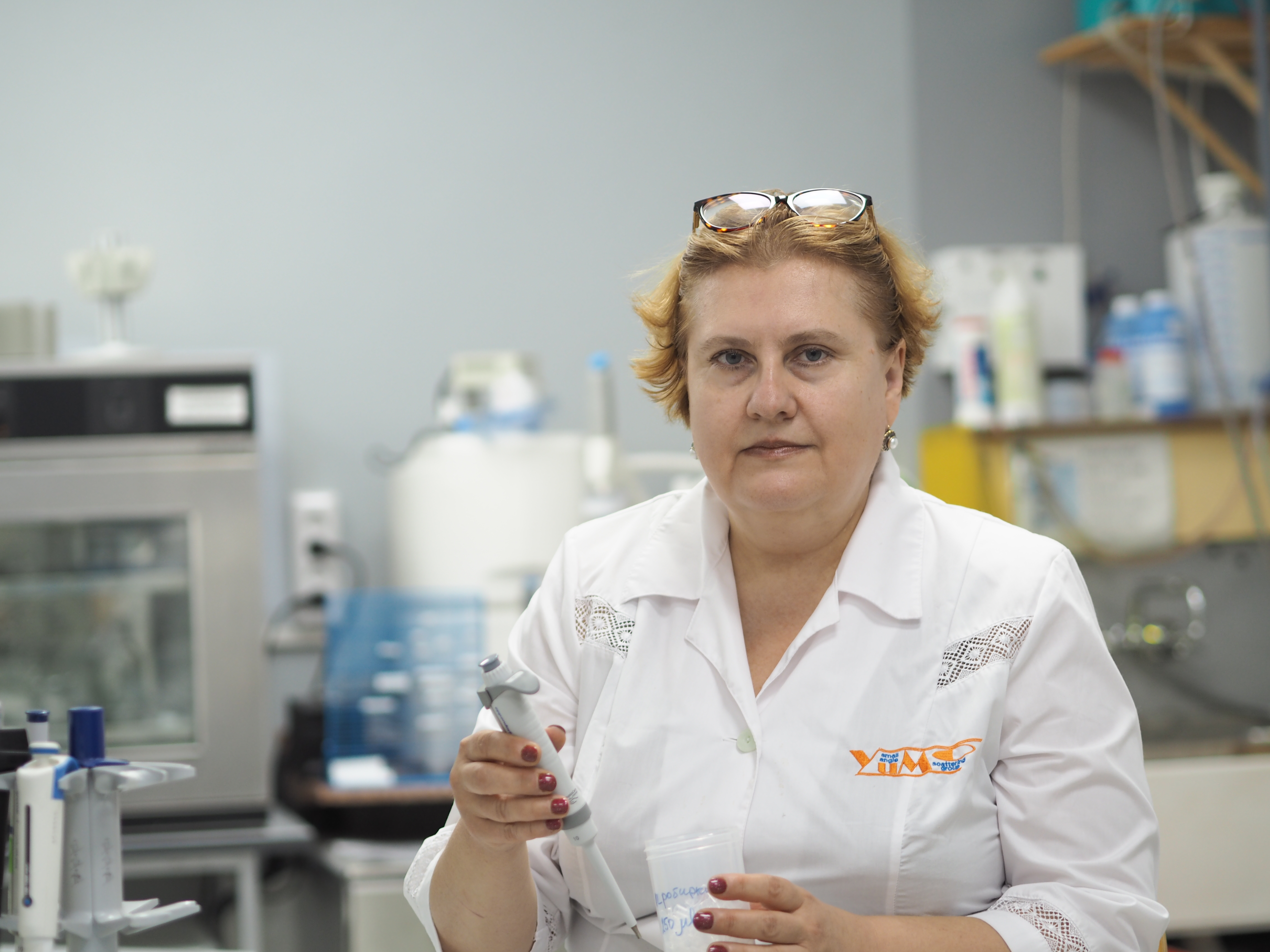Interview conducted in February 2022
Balasoiu Maria – PhD in Physical Sciences, leading researcher at DN-12 group, sector №1 diffraction, Department of Neutron Investigations of Condensed Matter.
It’s very interesting trying to understand why I chose physics. Many factors were in place this. What after many years I can say for sure, is that I made the right choice. At school, I liked all the subjects, especially literature, and the Romanian language. I wrote poetry and prose. Among my mother's relatives there was a nuclear physicist and teacher of physics and math. But with my first physics teacher I was not lucky: she taught boringly. In the seventh grade, our teacher changed, and the subject became more interesting. She explained the material better and gave the experimental methodology. Contact with the teacher has always been important to me. It was inspiring when my successes were noticed. At first, my grades were not the highest, but I felt that I could improve them. And during the winter holidays, I solved all the exercises on the topic that we were covering. My mother, a philologist by specialization, even did some experiments with me. And on the next test, I got an A, and the teacher encouraged me: “You see? You can!”. Since then, I haven’t had any grades in physics below A. And in high school, I studied at the Physics and Mathematics Lyceum, where good teachers taught us physics. So my choice was taking form. As it seemed to me then, my parents did not give me advice, but in fact, of course, they were guiding me. My dad was a historian by his second specialization, he had many interesting books. When my parents noticed my interest in historical literature, they, as they confessed to me later, began to hide these books from me. In those days, studying in the humanitarian field in Romania meant becoming a teacher in the village. But the passion for reading remained with me. And when we visited my mother's parents in Moscow in the summer, I plunged headlong into my mother’s sister’s amazing library. In Romania, there wasn’t as much translated foreign literature as in the USSR. And my aunt's library had good popular science books on physics. Probably, my aunt somehow controlled these requests of mine. Because a pick of even a popular, but not a specific book for my age and my corresponding knowledge would have had the opposite effect: scaring me away from science. And when in high school I read a book about the Theory of Relativity, surprisingly well written, almost without formulas, I was shocked. Everything in it was so clearly stated that I was able to retell it to my dad while walking. Apparently then I realized that I wanted to do physics. Although I had no idea what physics exactly.
And there began my long and arduous way to find my direction. When I entered the Physics Department of the University of Bucharest, we were already studying in a new building, next to where several physics institutes at the Institute of Atomic Physics were located. At that time, there was still work by allocation in Romania. But there was no way to get to large cities. I worked as a physics teacher at the Tulcea Lyceum for a year. Then I returned to Bucharest to the Electrical Engineering Research Institute. It was the second most important institute in Romania. I was offered a job based on my specialization – optics, spectroscopy, plasma, lasers, in a new laboratory for characterization of materials. There I was engaged in studies of the composition of materials by atomic emission spectroscopy.
There was a lot of good, new physics literature in Russian in the library of the institute. Thus I also was engaged in the translation of special literature into Romanian. Once a colleague from another laboratory asked me to sign a greetings card in Russian to colleagues from Dubna, with whom this group collaborated. This is how I learned about JINR.
At that time I was doing spectroscopic studies, which, in my opinion, were quite routine. So I began thinking about what else to do. Thanks to my knowledge of Russian, I was invited to the metrology laboratory at my institute. A new research group was organized there. As part of this group, I was offered to deal with magnetic measurements. What does the Russian language have to do with it? – This laboratory had a contract with the representative office of "Mashpriborintorg" – the only supplier of oscilloscopes, power supplies, and other devices from the USSR at that time. Our laboratory was the only one in Romania that could service these devices and do metrological attestation. For these purposes, some specialists traveled to different factories in the USSR for two-week courses. There they got acquainted with the peculiarities of equipment and the intricacies of its repair. The head of the laboratory, a leading engineer, was from the city of Tulcea, where the Lipovan Old Believers once settled. He also knew Russian. He went on these business trips as a simultaneous interpreter, and I would make his work easier: together we could cover a wider range of topics. I have been interested in translations for a long time. I even received a certificate as a translator in literature and physics. In my student days, my Romanian translation of Ivan Efremov's “Andromeda Nebula”, published in the faculty's local newspaper, was highly appreciated by my fellow students and physicists working in the neighborhood. My mother instilled in me a love of science fiction. She was very fond of it.
Everything seemed to be going fine, but again I was missing something. I moved to another laboratory at the institute, dealing with gravity, inertial systems, and ferrofluids. The engineering part of the group created various inertial systems, while mathematicians and physicists were engaged in theory. Experimental physicists were just recruiting. I began to deal with ferrofluids. We have started business trips to Timisoara. A group of specialists worked there under the leadership of Academician Ion Anton (now it’s headed by Academician Ladislau Vekas). Even at that time, it was the leading group in Romania for the production and research of ferrofluids for physical and technical purposes. We studied the electrical, dielectric, magneto-optical properties of ferrofluids, turned to other laboratories for help. By the way, here my experience in metrology came in handy. 1989 came, a revolution struck in Romania, and with it big changes everywhere, including the structure of our institute. I wanted to go to graduate school. For this, I had to go to the Institute of Gravity and Space Sciences. But I still continued to study ferrofluids, although at first, I felt like a black sheep. At this institute, several groups actively cooperated with JINR. And on someone's table, I saw a Joint Institute journal issue in Russian. I was surprised. I started flipping through it and reading about the research of nanostructures – my investigations – and about instruments and small-angle neutron scattering. By that time, I had the feeling again that I was marking time. Because I was already aware of all works on this topic. I was introduced to the staff of another institute engaged in neutron research at a reactor in Bucharest. I met with Alexander Stoica and Boris Gravchev, who collaborated a lot with colleagues from FLNP. I talked about my research on ferrofluids, the properties of these systems, and their suitability for the small-angle neutron scattering method. I talked about the novelty of such research in Romania.
They were impressed by my considerations, and after a while Boris, going on a business trip to Dubna, offered to take my samples. It was 1991, probably, and Yuri Ostanevich was still alive. Boris Gravchev discussed with him the possibilities of the contrast variation method in research. And my samples on a regular and deuterated carrier were prepared in Timisoara by a very good chemist, Doina Bica. For Boris, it was a memorable business trip. Because in those times of the USSR and the leadership of Ceausescu, the Romanians, who had relatives in Gagauzia – as in the case of Boris – could not go to the Soviet Union. This is how my first samples were measured in Dubna.
In Bucharest, we started processing the data. Our first results were obtained on the separation of the nuclear and magnetic components of the intensity of small-angle neutron scattering using the contrast variation method. At the same time, I passed my postgraduate examinations with Professor Bali.
Boris saw an advertisement for a neutron school in Dubna in 1995 and said: "It would be nice for you to go there." It was too late to get on the list with financial support, so I went at my own expense. Good that my dad helped me. I did not have any contacts in Dubna. Ostanevich had already died. The only thing I knew was that Alexander Ivanovich Kuklin was dealing with our samples. I met him personally at the school. We discussed the results of the first measurements and the possibility of future ones. In February 1996, I came to my first experiments on the SANS spectrometer (known today as YuMO) at the IBR-2 reactor. February was cold. Measurements and data processing went on for a month. There were no computer programs that could speed up and facilitate the process as now. Now a lot of things can be done remotely, but then the experiments were not easy. We worked around the clock. Alexander Ivanovich had his own method: he gave me books, and I sat at the hotel on Moskovskaya 2, read at night, processed the results myself. And the technique worked! It was a wonderful experience! I also talked to the Romanian colleagues who worked here at that time. They gave me advice: it is even more efficient to come here to work for a longer period. So I turned to Anatoly Mikhailovich Balagurov, the head of the department, and discussed with him my future dissertation and the opportunity to come to work at FLNP. He recommended using polarized neutrons. Therefore since the fall of 1996, I worked with Yuri Vasilyevich Nikitenko for two years at the facility now called REMUR. But then returned to the small-angle scattering instrument.
And now ... 25 years have passed. A lot has been done, yet a lot remains to be done. Based on the work accomplished over the years, in the fall of 2021, I received the scientific title of chief researcher in Romania.

